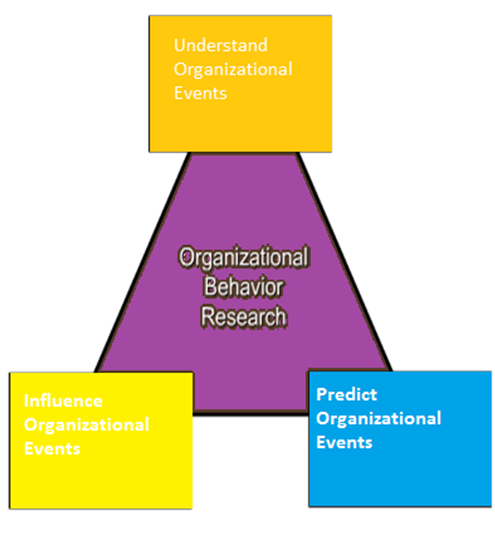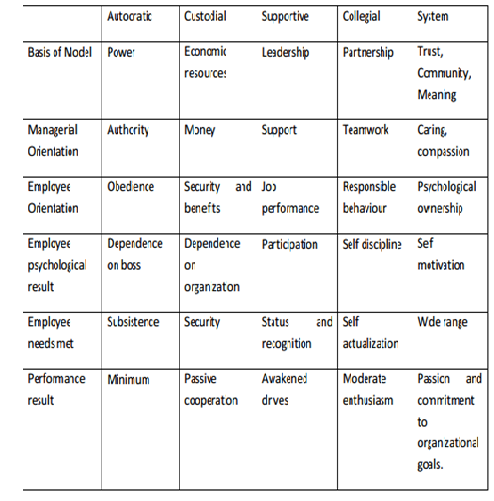Conceptual Model Of Organization Behaviour (Organisational Behaviour and Design)
Successful firms must develop thorough understanding of organizational behaviour. Organization behaviour is the study of the working and performance of individuals, groups, and teams within organizations as well as of organizations as a whole. It is vital that managerial staff learns about human behaviour, discover how to increase his/her interpersonal skills and manage relationships with others at work. Organizational behaviour is a scientific discipline in which huge amount of research studies and conceptual developments are continually occur. It is also an applied science, in that information about effective practices in one organization is being extended to many others. Abundant of theoretical data demonstrated that organizational behaviour is the methodical study and application of how individuals and groups think and act within organizations and how these activities affect the efficiency of the organization. Organizational behaviour theorists involved in studying not only at individuals or groups as isolated entities, but also as part of an interactive social system in which the actions of one part impact the functioning of another. Organizational behaviour also enhance organizational effectiveness at all levels within the organization through good understanding, predicting, and influencing events on the individual, group, and organizational levels.
One of the important principles in the area of organizational behaviour is that Organizational behaviour theory and practice does not function in separation, but is multidisciplinary, drawing on the insights arising not only from its own research but also the research and insights of other disciplines. Organizational behaviour study in companies is useful for managers as it provides effective tools at five levels of analysis, helps managers to understand the behaviour of individuals within an organization, facilitates their understanding of the complexities involved in interpersonal relations, when two people interact. Organizational behaviour is useful to investigate the dynamics of relationships within small groups, both formal teams and informal groups. When two or more groups need to synchronise their efforts, managers become interested in the intergroup relations that emerge. Organizations can also be viewed and managed as whole systems that have inter organizational relationships. Organizational behaviour provide challenges and opportunities for managers. It recognizes differences and assists managers to understand the value of workforce diversity and practices that need to be changed when managing. It can help improve quality and employee productivity by showing managers as to how to empower their people as well as how to design and implement change programs. It can assist managers to cope up in the world of temporariness and learn ways to stimulate innovation.
The goals of organizational behaviour are to define systematically how people behave under different conditions, to understand why people behave as they do, predicting future employee behaviour, control partially and develop some human activity at work. Major elements of organizational behaviour are People, Structure, Technology, and Environment.
Reason for studying organizational behaviour

There are four basic approaches of organizational behaviour.
Human Resources approach- Employee growth and development toward higher levels of competency, creativity and fulfilment are stimulated and supported because people are the central resource in any organization and society.
Contingency approach-Various managerial behaviours are required by different environments for effectiveness.
Results oriented approach-Outcomes of organizational behaviour programs are assessed in terms of their effectiveness.
Systems approach- All parts of an organization interact in a complex relationship. Systems approach is involved in comprehensive view of people in organizations and analyses issues in terms of total situations and as many factors as possible that may affect people's behaviour.
Basic organizational behaviour Model
Three main theoretical frameworks of organizational behaviour include the cognitive, behaviouristic and social learning frameworks. These form the basis of an organizational behaviour model.
The cognitive approach is based on the expectancy, demand and incentive concepts. Edward Tolman has developed this approach. Behaviouristic framework concentrates on observable behaviours. Ivan Pavlov and John B.Watson evolved the theoretical model of the behaviouristic approach. These theorists described human behaviour on the basis of the connection between stimulus and response.
The social learning approach integrates the thoughts and principles of both the cognitive and behaviouristic frameworks. This approach denotes that behaviour is explained as a constant reciprocal interaction between cognitive, behavioural and environmental determinants. Renowned theorists, Allbert Bandura, Julian Rotter, Salancik and Pfeffer are the main advocates this framework.
In management practices, there are five organisational behaviour models that include Autocratic, Custodial, Supportive, Collegial and System. Autocratic model is power with a managerial orientation of authority. This model evolved during the industrial revolution, in the 1800's and 1900's. This model undertakes that employees have to be directed and motivated to do the work. In this model, management does the thinking, employees follow orders and depend on the manager. Employees are under controlled. Characteristically, employees receive lowest pay for minimum expected performance. Employees may have lower skills. Often, employees work in the authority model because they have to provide maintenance for themselves and their families.
Main drawback is that it leads to micro management. With micro management, managers control daily operations of employees. Managers control time and processes, they put their needs above those of employees, they insist on complicated approval processes for even the smallest things and closely monitor all results. Autocratic model and micromanagement results in low employee morale, poor decision-making and high turnover. This model can be beneficial in crisis situations, or with short-term employees (Newstrom).
Custodial is economic resources with a managerial orientation of money. In the decade of 1800's, employers understood that personnel can give better performance if their basic needs are more satisfied. In this model, employees emphasize on economic rewards. They may be reasonable content, but may not be highly motivated just inactively supportive. Organization that embrace the custodial approach have a lower staff throughput. However, employees do not give their best performance. The custodial model is a good foundation for organizations to grow to the next approach.
Supportive model is leadership with the managerial orientation of support. Studies were conducted for this model in the decades of done 1920's and 1930's. Personnel are more interested because their status and recognition needs are better met as compared to other models. A supportive manager helps employees solve problems and complete their work.
Collegial model is corporation with the managerial orientation of team work. In this model, organisation develops a feeling of partnership with employees. The environment is open and people participate. The collegial model is beneficial for creative work such as marketing or communications or in thinking environments.
System Model: This model is currently developed in which people want more than money, job security and cooperative teams. The system model focuses on identifying developing and managing the strengths within employees.
The models of organizational behaviour (Source: John W Newstrom)

To summarize, organizational Behaviour is explained by various theorists as study and application of knowledge about how people, individuals, and groups act in an organization. It construes relation between people and organization in terms of the people, group, organization itself, and social system. Its need is to provide to best relationships to accomplish human objectives, organizational goals, and social vision in the long run. Organizational behaviour can be used to study attitudes and behaviours of workers and tries to realize how effectively manage and change them.

